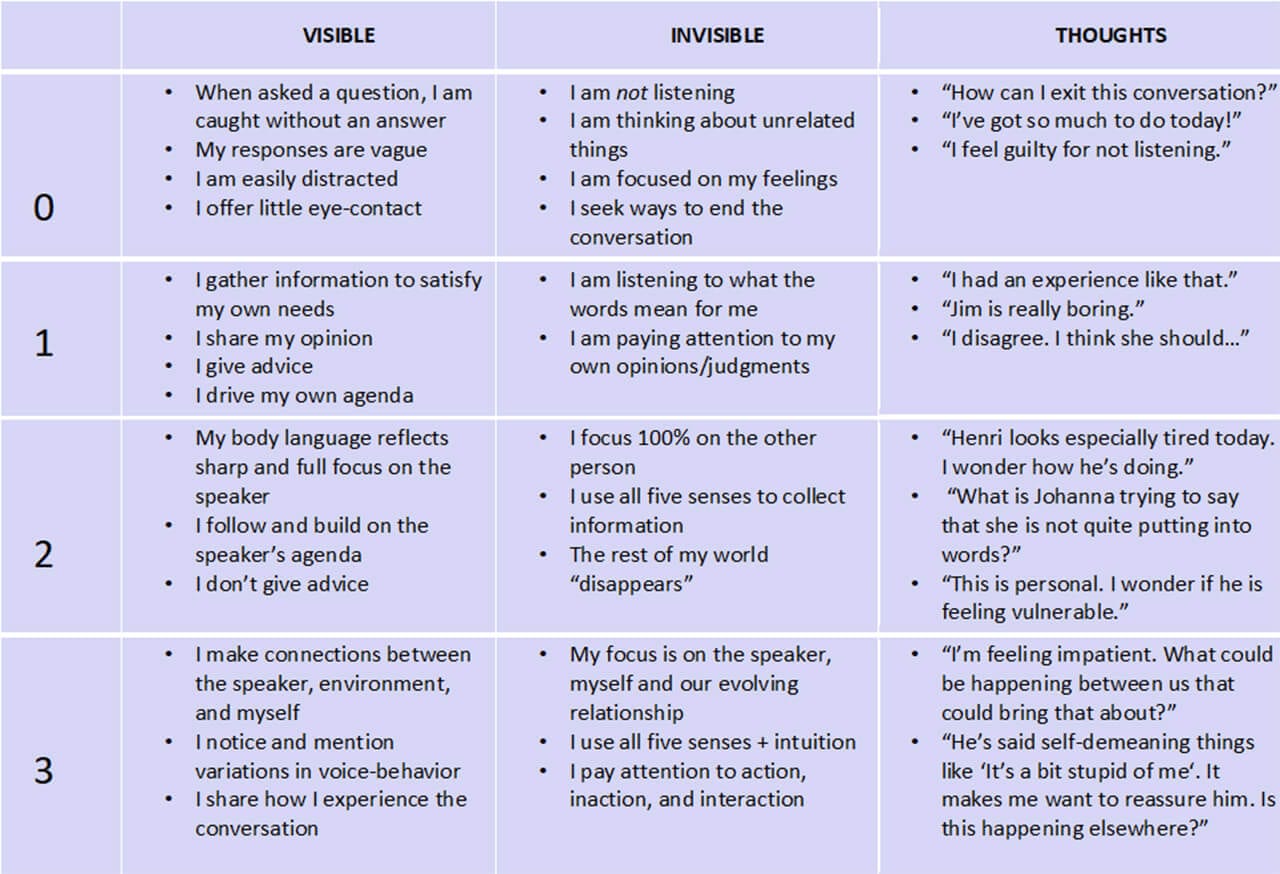The Three Layers of Listening in Coaching
When we coach, we offer the rare gift of listening deeply.
The first time I shared the Three Layers of Deep Listening Model (adapted from chapter 3 of Co-Active Coaching, by Laura Whitworth, Karen Kimsey-House, Henry Kimsey-House and Phillip Sandahl) with workshop participants, I asked them to remember the last time they had listened to someone at Level 2. Eyes got wide; people looked at the floor and ceiling, then at each other. Silence hung heavy. Totally taken aback, I knew that we had stumbled onto something very important. This led me to realize that there was a layer missing in the Model: Level 0. Here is a summary of the expanded model:

Can we actually determine and control the level at which we are listening?
Levels 0 and 1
About 10 years ago, I was coaching a manager who was telling a long story. I found myself trying hard to listen, yet repeatedly “drifting off.” My stomach was in knots of frustration. No matter how hard I tried, I wasn’t doing what I was being paid to do. Then a lightbulb went on, and I was suddenly fascinated by the fact that I was working this hard to be engaged. Why was this happening?
Level 2
My attention turned toward the way in which my coachee was relating her story. A visual image emerged in my mind of a branch with leaves. Her story seemed to have a goal, heading from the base to the tip of the branch, yet with detours to walk around the edges of each leaf along the way. It seemed to take way too long to get from base to tip.
Level 3
With each detour, I felt annoyance, followed by inattention. I wanted her to finish the point she had started right away. I wondered how others experienced her narrations. I asked permission to share what was going on inside of me. Taken by surprise, she was curious about what I might say. I related the above, and even shared a couple of detour examples that I had jotted down while (not) listening. Then I drew the branch. She immediately took the conversation in a completely new direction, making links between what I had shared and what she struggled with when communicating with key stakeholders. This created a shortcut that accelerated our progress significantly.
Changing our Thoughts
Back to my workshop: I asked participants to identify a challenge and converse in pairs, striving for Level 2 and 3 listening. Many were able to identify their initial level of listening by noticing what their thoughts were (column 3), and then adapt their thoughts and focus accordingly.The atmosphere, body language and tone in the room changed remarkably with each change in level.
We can move our listening to the next level at will, by changing our thoughts! Since that workshop, I have worked with numerous groups in the classroom, challenging them (successfully) to move to Level 2 or 3 with conversation partners, by turning their attention to the thoughts they are having.



I love this chart. It makes the 4 levels concrete. I would love to talk with Julie Johnson. Can you please find a way to connect us?
Barb Girson
Thank you for sharing the chart. The three categories (especially, thoughts) helped me to distinguish the levels even more.